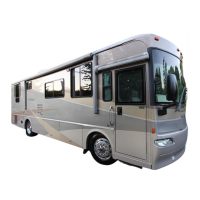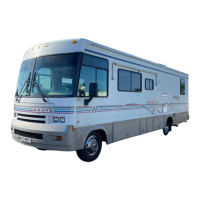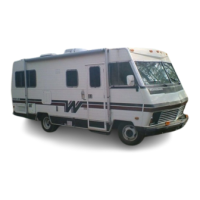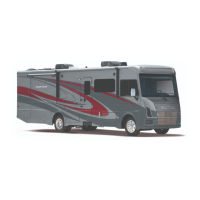SECTION 6 –
ELECTRICAL
6-4
If your battery does not charge as described
above, it is possible the battery is defective.
If the batteries are extremely discharged, the
charger unit will not activate to charge batteries
NOTE: We do not recommend leaving the
shoreline plugged in continuously during
storage periods because the batteries
can lose electrolytic fluids and become
damaged from continuous charging
without periodic use. We recommend
following regular battery inspection and
maintenance, especially in cold weather.
See “Battery Storage & Maintenance” at
the end of this section.
Inverter/Charger Control Panel:
–If Equipped
The inverter/charger has a wall mounted
monitor/control panel that can be programmed
for several charging options. It will also display
warnings for overload conditions or other
operating failure conditions.
When the inverter is not being used, it should
be shut off at the control panel. The inverter
could drain the house batteries if the shoreline is
not connected to external power and the Aux.
Battery switch is on.
NOTE: Switch the refrigerator to GAS mode
anytime you are running it with the
shoreline unplugged to avoid
discharging house batteries.
The refrigerator draws its electrical
current through the inverter and not
directly from the shoreline. If the
refrigerator is in ELECTRIC or AUTO
mode, it will continue to draw from
house batteries through the inverter
when the shoreline is unplugged unless
the inverter is turned OFF.
Further Information
See the inverter/charger control panel
instructions in your InfoCase for complete
instructions and charging setup directions.
POWER CENTER
(Converter)
The power converter is generally located in a
lower cabinet face in the galley, living area,
beneath a bed, or in power cord compartment
depending on the floorplan of your model.
The power converter changes 120-volt AC
current from the auxiliary generator or the
shoreline into 12-volt DC current for use by 12-
volt equipment in the motor home.
Certain circuits, however, remain unchanged
for use by items which require 120-volt current,
such as the air conditioner(s), the refrigerator in
AC mode, the microwave oven, etc.
NOTE: The converter will not change 12-volt
DC current to 120-volt AC.
Current drawn from the house batteries passes
through the power converter unchanged,
although it is routed through a series of protective
fuses located on the power panel.
Further Information
See the manufacturer’s operation, care and
maintenance information in your InfoCase.
Inverter/Charger Control Panel
CAUTION
Do not block the converter cover vents in
any way. The converter generates heat
while operating, and needs unrestricted
air flow for proper cooling.

